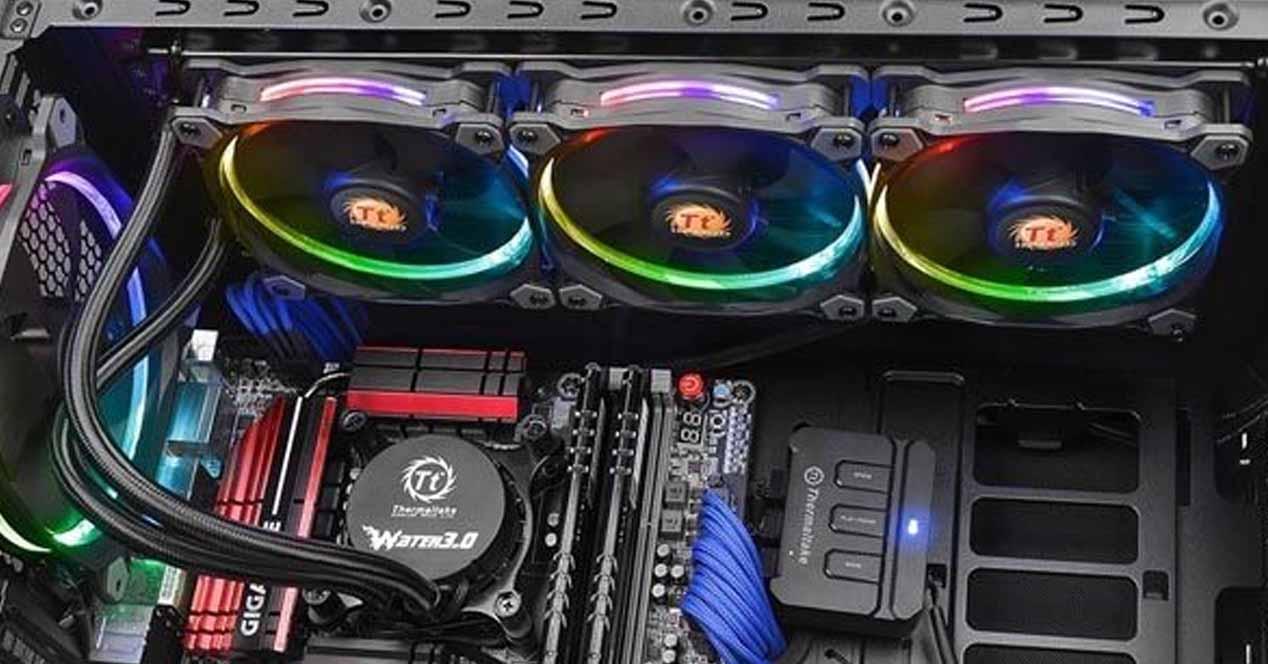It is quite common to see complaints from users who have just installed a new AIO liquid cooling because of the noise they make, and also with good reason as generally this noise can become quite annoying. However, after a few hours (we are talking about 2-3 hours of operation) the noise begins to decrease and after 24 hours of operation you will see that this sound level stabilizes at its lowest value. Why is this happening?
The noise of AIO liquid cooling
Unlike air heatsinks where the only noise we hear is from the fans and it is always stable, in AIO liquid cooling there are two additional factors that can make noise: the pump pushing the liquid through the closed circuit. , and also the liquid itself moving inside. Indeed, if the manufacturer was not meticulous and there are burrs inside (especially in the joints between the tubes and the radiator), this noise can become a little high.
However, the sound level emitted by the liquid cooling when you have just assembled it is much higher, and this because despite the fact that it is a closed circuit in which the liquid moves inside , they are never full. 100% and there are always air bubbles. When you mount the device on your PC, you have probably moved its various components, causing the bubbles to distribute throughout the circuit, and these are responsible for this extra noise that is emitted throughout the circuit, both when they “collide” with various internal parts, especially when the pump pushes air instead of coolant.
As the operating time passes, the bubbles always tend to settle in the highest part of the circuit (for this reason, among others, we always recommend installing the radiators on the roof of the box) until all the air has collected there. zone and stop “harassing”. Usually after 2-3 hours of operation, almost all the air has already settled in the upper zone, but it is only after about 24 hours of operation that everything has stabilized and the AIO liquid cooling emits the noise it should make and no more.
Can this process be accelerated?
Yes, there are two ways to stabilize liquid cooling in about an hour, and it is really advisable to do both for this and to verify that it is performing adequately.
The first way to do this is to configure the pump (if configurable) to run at maximum for a long time (one hour), so that it displaces as much liquid as possible and thus accelerates the deposition of bubbles in the pump. the Upper Zone. If the pump does not have a configurable speed, you can still strain the processor with programs like Prime95 to force the system to run at its maximum, and at the same time you can check if the operating temperature of the processor is adequate and if liquid cooling does its job well.
The second method is to turn the cycle on and off, which, while less recommended, also works. Basically, almost all AIO liquid coolers are designed so that when the system is started they will run for a few seconds at their maximum to “start” and the liquid will start to flow through the circuit, also accelerating the bubbles for go to the top.
There is one thing you need to keep in mind, and that is that if you have mounted the radiator on the cabinet floor, it is likely that the pump will still continue to make the same noise, because as we have stated before, air bubbles will always tend to settle at the highest part of the circuit, so if the pump is above the radiator, the air pocket will be generated in the pump itself, which will cause it to do much more noise and, in fact, will significantly shorten its lifespan.










